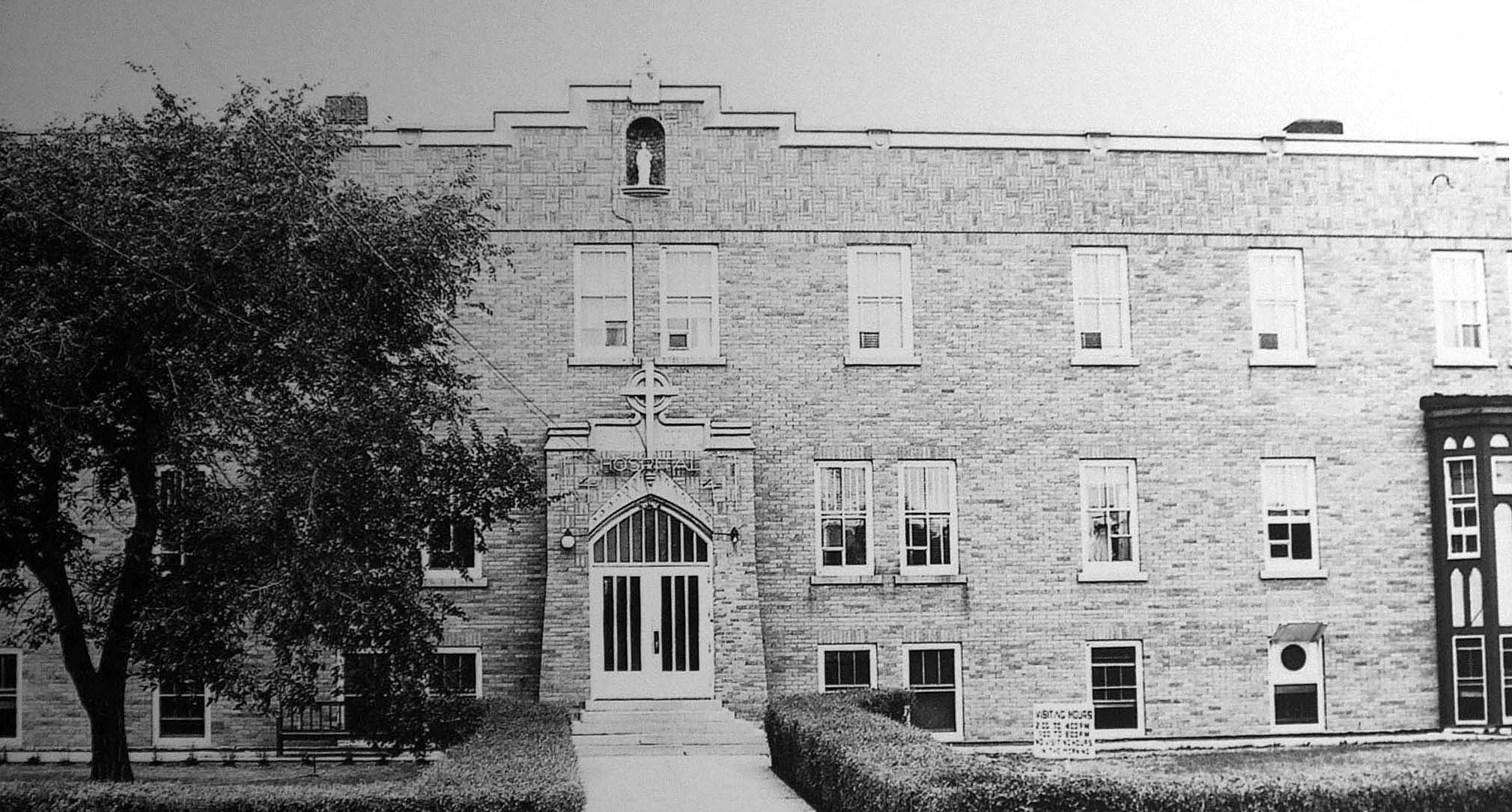News
St. Andrew's Hospital celebrates 100 years
Scott Wagar
04/23/2013

Editor’s Note: From May 5-11 St. Andrew’s Health Center will be celebrating its 100th Anniversary as a medical facility. In celebration of St. Andrew’s centennial, the Bottineau Courant will be writing a series of articles on the health facility and its history. This week’s story will look at the growth of St. Andrew’s Hospital.
On October 23, 1913, St. Andrew’s Health Center opened its doors for the first time in its history. The idea behind a hospital in Bottineau originated from Father Joseph Andrieux, a local Catholic priest who discovered a need for a community hospital while serving the churches in his charge throughout the region.
With assistance from the residents of Bottineau, Andrieux was able to purchase the original North Dakota School of Forestry’s building. The structure was constructed in 1907 when the School of Forestry started, but within a year and a half the building was primarily sitting empty after the college received state funding to construct a two story brick edifice (Old Main) to educate their students in.
In the fall of 1912, Andrieux purchased the college’s structure and started the renovation of the building to make it into a hospital. As contractors worked on rehabilitating the edifice, Andrieux held meetings with The Sisters of Mary of the Presentation out of Wild Rice, N.D., and the two entities came to an agreement that six nurses from the Presentation would come to Bottineau and take charge of the hospital and conduct its operations.
Once St. Andrew’s opened in 1913, the hospital saw a large number of patients. Overcrowding became such an issue for the health center that the nuns gave up their rooms, moved out of the facility and rented a house in town to grant more rooms for patients.
As the hospital struggled for rooms for its patients, the School of Forestry was fighting the problem of finding housing for its large number of students.
Once again, Andrieux came up with an idea to assist not only the hospital, but the college, too.
Andrieux made a business deal with the State of North Dakota in which the state agreed to purchase back the original Forestry building for $10,000.
The structure was once again renovated, but this time into a dormitory, which was named Hovind Hall after Alf Hovind, a student at the college who joined the armed forces in 1917 and died in France during World War I. Hovind served in the 5th Company, 338th Machine Gun Battalion from Basic Training to Nov. 24, 1917, and Company F 4th Battalion, 20th Engineers until his death at Bordeaux, France on Sept. 11, 1918.
In the fall of 1918, work started on the first half of a new brick hospital for St. Andrew’s, which was completed in May of 1919. The building was placed on ground granted to the hospital by the County Board of Commissions and was located on the block where St. Andrew’s Health Center stands today.
The hospital was dedicated in June of 1920, which was a festive event.
“Thursday afternoon of last week the dedication ceremonies at St. Andrew’s hospital were held,” stated the Bottineau Courant on May 29, 1920. “The dedication was conducted by Bishop O’Reilly of Fargo; high mass by Monsignor Lemieux of Grand Forks and the sermon preached by Rev. T.J. Eagleston of Westhope. Fr. Campeau of Willow City, Fr. Tureotte of Grafton and Fr. Andrieux of this city were also present.
“Following the dedication, a banquet was served by the Sisters of the hospital. Supper was served by the ladies of Bottineau at the Home Auto Garage and the proceeds, which we understand amounted to about $150, were given to the hospital,” the Bottineau Courant continued to state. “Following supper, a ball game between Willow City and Bottineau took place at the fairgrounds, in which the Bottineau boys were victorious after a ten inning frame with a score of 3 to 2. Following this, many people attended the Grand Theater (Botno Theatre today) and the dance at Wigeby Hall. The Bottineau band furnished music during the afternoon. All in all the day will be long remembered by those in attendance and many people had the opportunity of going through the hospital and seeing what it contained.”
“The new medical facility was considered to be one of the best hospitals in the northwest region of North Dakota and held all the most modern equipment of the time.
However, even with a new structure and more room, the hospital still tussled with over capacity.
To care for the overcrowding of St. Andrew’s, an addition was added on to the hospital’s south side in the late 1920s and was dedicated in May of 1929.
The hospital with its new addition and two and half stories, granted St. Andrew’s 29,232 square feet of floor space, which included 60 beds to care for patients, along with an operating room, sterilizing room, maternity ward, laboratory, chapel, large dinning room, laundry room, boiler room, screened-in porches for patients, private quarters for physicians, along with sleeping rooms for on-call staff.
With the new addition in 1929, St. Andrew’s was able to care for its patients and staff in a more suitable manner, but as time went by the hospital would have to construct additional space for its patients and staff as its growth continued.
However, in 1929, St. Andrew’s would take another venture within its hospital, and nursing school, which would add to the health care center, School of Forestry, communities in and around Bottineau and the medical world.
Writer’s Note: Next week, the Bottineau Courant will continue to look at the growth of St. Andrew’s Hospital and St. Andrew’s Nursing School.
